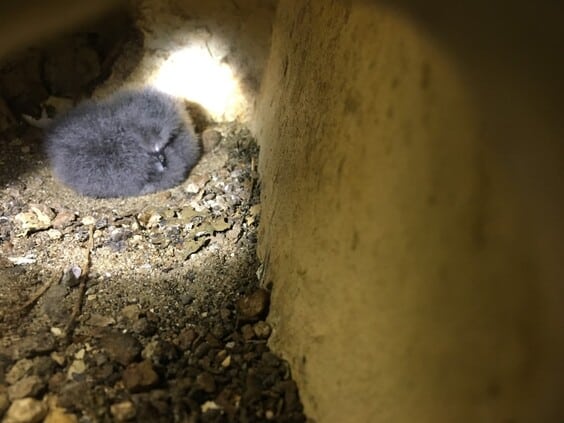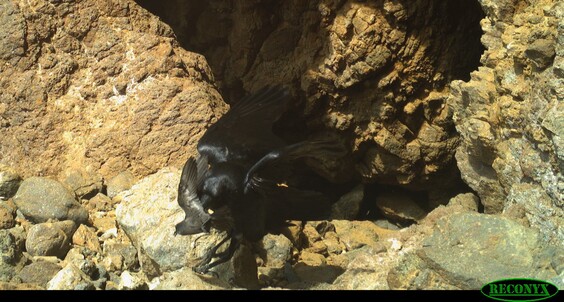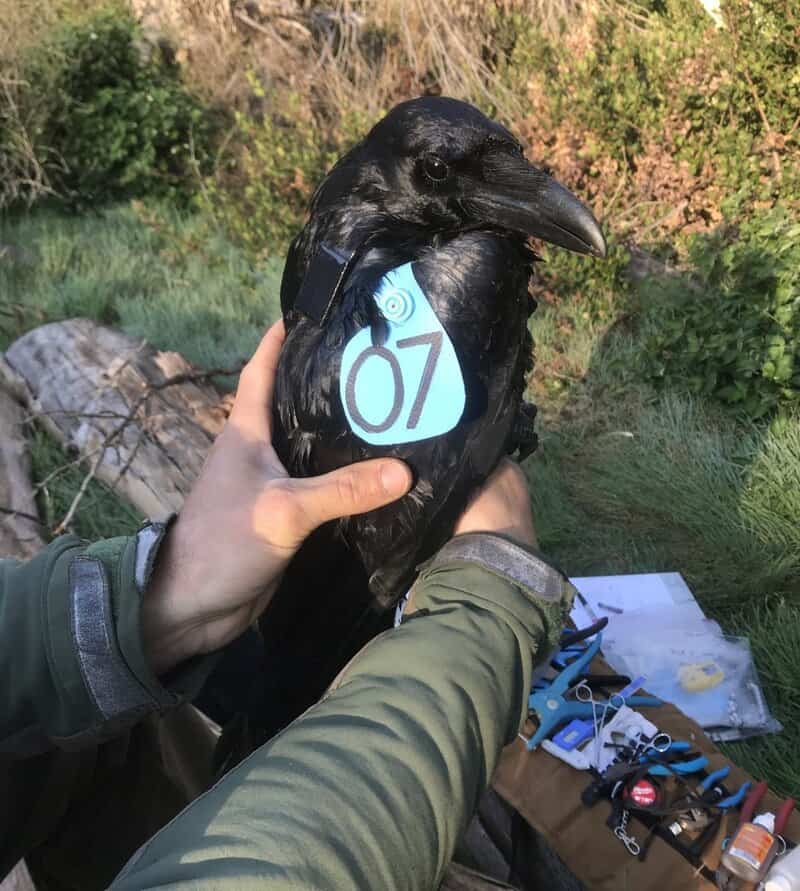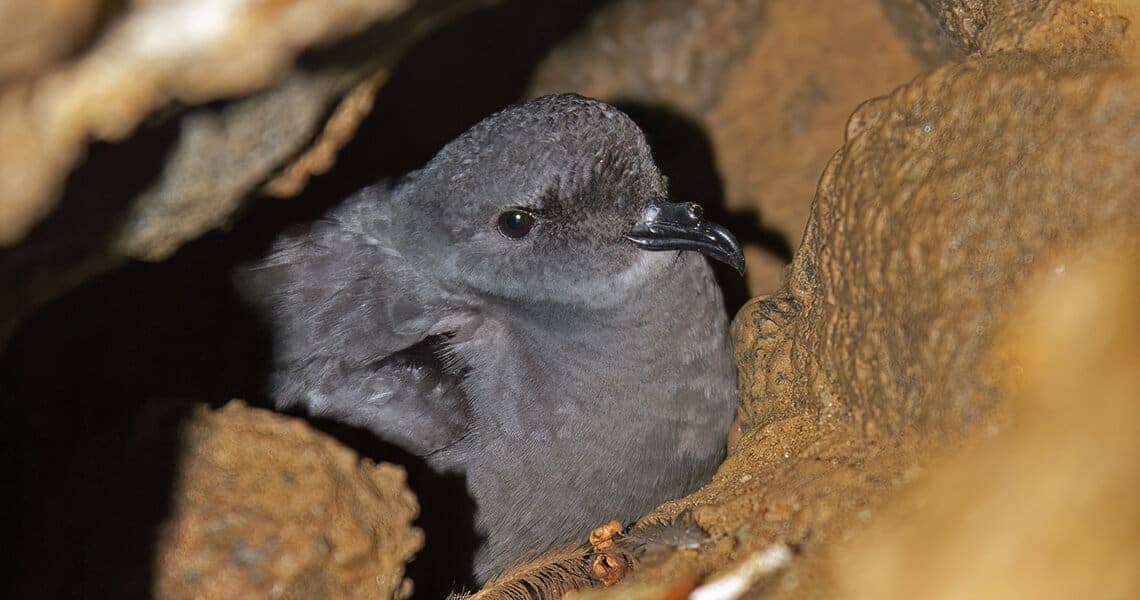By Annie Little, Supervisory Natural Resource Manager, Channel Islands National Park

Ashy Storm-Petrels (Hydrobates homochroa; ASSP) are a rare seabird endemic to California and northern Baja California. ASSP are known to nest at 33 locations across its range with breeding populations concentrated at the South Farallon Islands and northern Channel Islands. ASSP are listed as endangered and declining by the International Union for the Conservation of Nature and considered extremely vulnerable due to a small population size, limited range, and vulnerability to depredation. When nesting, ASSP do not excavate burrows, but rather nest within rock crevices, rock walls, sea caves, and among driftwood, often in sites that are vulnerable to predation. Reproductive monitoring for this species at Channel Islands National Park (Park) has been ongoing since the mid-1990s. Researchers have documented substantial predation by Common Ravens on offshore rocks and sea caves on Santa Cruz Island since 2010. To provide safe nesting habitat for petrels and reduce predation risk from ravens, various iterations of artificial nesting modules have been deployed in the park over the last 15 years.

In 2019, the National Park Service, California Institute for Environmental Studies, and the Institute for Wildlife Studies initiated a Common Raven study on Santa Cruz Island to better understand raven movements, distribution, and predation on ASSP. Thirteen ravens were captured and wing tagged, of which a subset (seven individuals) were tracked using GPS-UHF radio backpacks. Their movements were recorded by a series of base stations across the island. A network of remote cameras was also placed in key nesting colonies in sea caves to identify marked ravens that entered the colonies. Between 2019 and 2021, this study demonstrated that one mated raven pair was responsible for a majority of predation events on adult ASSP. In one of the key sites where approximately 100 pairs nest, a total of 50 carcasses/feather piles were collected during the study period. The Park and its partners are now pursuing the following management activities: 1) targeted removal of the responsible raven pair, 2) understanding the impact of removal, 3) identifying raven impacts on other rare seabird species and colonies, and 4) developing a corvid management plan for the Park.

Despite the challenges with raven predation, we are encouraged by the ability of the artificial modules to provide safe nesting habitat for ASSP. A concerted effort by multiple partners has led to improved module designs that can be deployed in nesting locations across the nesting colonies. Partners in this effort included Oikonos Ecosystem Knowledge, California College of the Arts, U.S. Fish and Wildlife Service, National Fish and Wildlife Foundation, and Point Blue Conservation Science. With low-lying nesting habitats (such as those in sea caves) being threatened by global climate change and sea-level rise, the deployment of these modules will facilitate nesting in suitable areas at higher elevations. Further, a binational ASSP working group has been coordinating on the monitoring, research, funding, management, and conservation of the species across the range. This coordination is being formalized in a Letter of Intent being signed by the various stakeholders to promote collaboration among partners and further the conservation of this rare species. These bilateral efforts are key to ensuring the long-term viability of breeding colonies throughout the range in the face of on-going and future threats.

